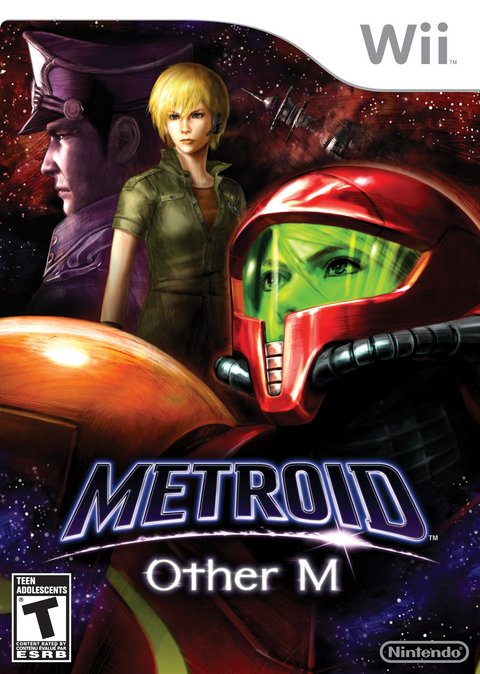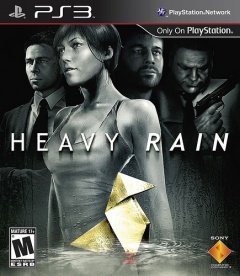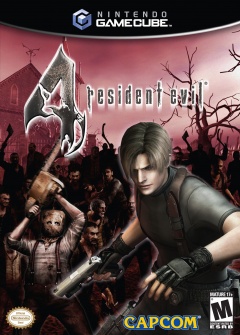resident evil 4
Metroid: Other M
 Metroid has never been one of Nintendo's big money-makers, but that
hasn't stopped the franchise from garnering some very devoted fans. It's
not uncommon to see Super Metroid or Metroid Prime sitting atop the
list of favorites from hardcore gamers, and for good reason. Super
Metroid provided a sprawling, interlacing realm of disquieting alien
dangers and secrets, and Metroid Prime translated that experience into
3D with incredible audio-visual design and some interesting
world-building mechanics built right into the gameplay.
Metroid has never been one of Nintendo's big money-makers, but that
hasn't stopped the franchise from garnering some very devoted fans. It's
not uncommon to see Super Metroid or Metroid Prime sitting atop the
list of favorites from hardcore gamers, and for good reason. Super
Metroid provided a sprawling, interlacing realm of disquieting alien
dangers and secrets, and Metroid Prime translated that experience into
3D with incredible audio-visual design and some interesting
world-building mechanics built right into the gameplay.
Though
there's certainly a base blueprint from these two trailblazers, no two
Metroid games feel exactly alike. Even so, I've found something to love
in each and every one of them (except for the antiquated debut NES game,
which admittedly I just played for the first time days before Other M's
release). The tension of being hunted in Fusion, the sudden shifts in
power at Zero Mission's final hour, the thousands of text logs scattered
through the Prime series...as far as I'm concerned, it's all great
stuff.
It's only natural that the formula would see some alterations and evolutions over a quarter of a century, and Metroid: Other M is the latest and most radical experiment to come out of Nintendo's R&D labs in quite some time. Featuring third-person 3D action gameplay and a heavy emphasis on cinematic storytelling, the curiously-subtitled Other M certainly feels very different from its predecessors. It seems to take after Metroid Fusion the most, with a bit of Metroid Prime in there as well, but Other M's additions and adaptations certainly make it feel distinct, for better or worse.
The QTE cure: Singin' in the Heavy Rain
 Quick Time Events. Ever since God of War and Resident Evil 4 exploded
onto the scene with button-prompt sequences of gore and horror, the
industry has shown its sheep-like nature and incorporated these Gotcha!
moments into games without thinking about how they make an
interactive experience better. Many gamers have adjusted to the fact
that every cutscene now has an awful series of play buttons throughout, but I
personally would like to cram all the QTEs in the world into a space
shuttle full of cobras and launch them directly into the sun if it meant
I'd never have to see another one again.
Quick Time Events. Ever since God of War and Resident Evil 4 exploded
onto the scene with button-prompt sequences of gore and horror, the
industry has shown its sheep-like nature and incorporated these Gotcha!
moments into games without thinking about how they make an
interactive experience better. Many gamers have adjusted to the fact
that every cutscene now has an awful series of play buttons throughout, but I
personally would like to cram all the QTEs in the world into a space
shuttle full of cobras and launch them directly into the sun if it meant
I'd never have to see another one again.
That said, it's not impossible to come across decent use of QTEs.
Indeed, before Resident Evil 4 set the standard at the advent of 2005,
the mechanic was most prominently-used by the Dreamcast's crown jewel,
Shenmue. In fact, it was Yu Suzuki, that game's director, who coined the
term "Quick Time Event." Suzuki put the gimmick to good use throughout
Shenmue, allowing protagonist Ryo Hazuki to do everything from tossing
drunkards around in bar brawls to saving little girls from incoming
soccer balls. One of the reasons the game is so beloved today is that it
allowed the player to engage in such a wide variety of scenarios, many
of which were supported with smartly-designed QTEs.
Good QTEs didn't end with Shenmue, however, even though sometimes it seems that's the case. Like God of War, other Playstation heavyweights have managed to use QTEs to enhance a game experience. I think it's only fair that we look at a few of those, as well as some alternatives to these timed button-prompts for cinematic flair in games.
The QTE plague: What hath God of War wrought?
 Quick Time Events. So many games have used them to some extent in the
last five years that just about every gamer has an opinion on them.
Mine is that they are the worst gameplay gimmick to take the industry by
storm in a long time, and I wouldn't mind seeing them all packed into a
burlap sack filled with leeches and thrown into the depths of a
volcano. They're tacky, they're unintuitive, and their attempts to
engage players in cinematic animations backfire and break the sense of
immersion one has with a game. And unfortunately for me, they're just
about everywhere these days.
Quick Time Events. So many games have used them to some extent in the
last five years that just about every gamer has an opinion on them.
Mine is that they are the worst gameplay gimmick to take the industry by
storm in a long time, and I wouldn't mind seeing them all packed into a
burlap sack filled with leeches and thrown into the depths of a
volcano. They're tacky, they're unintuitive, and their attempts to
engage players in cinematic animations backfire and break the sense of
immersion one has with a game. And unfortunately for me, they're just
about everywhere these days.
Two behemoths let loose in early 2005 can be thanked -- or blamed -- for the salvo of games that have featured QTEs in the last five years. The first, with a January 11 release date, was Resident Evil 4. The game was extremely well-received: it won many Game of the Year awards, offered a fresh take on the aging Resident Evil formula, and gave Gamecube owners a third-party exclusive worth bragging about. The other member of the gruesome twosome that brought us into the era of QTEs is known as God of War. Released just two months after Resident Evil 4, the game received just as many accolades and turned heads back to the PS2 as quickly as they'd been lost to the Gamecube's horror hit. Is it any wonder that the industry went in the direction it did when two such monumental successes as these both prominently featured a relatively unused gameplay gimmick?
Today we'll take a look at how the smart use of QTEs helped put these two games on the map, and watch a few examples of QTEs gone wrong. And trust me, there was a huge pool of resources for the latter.

